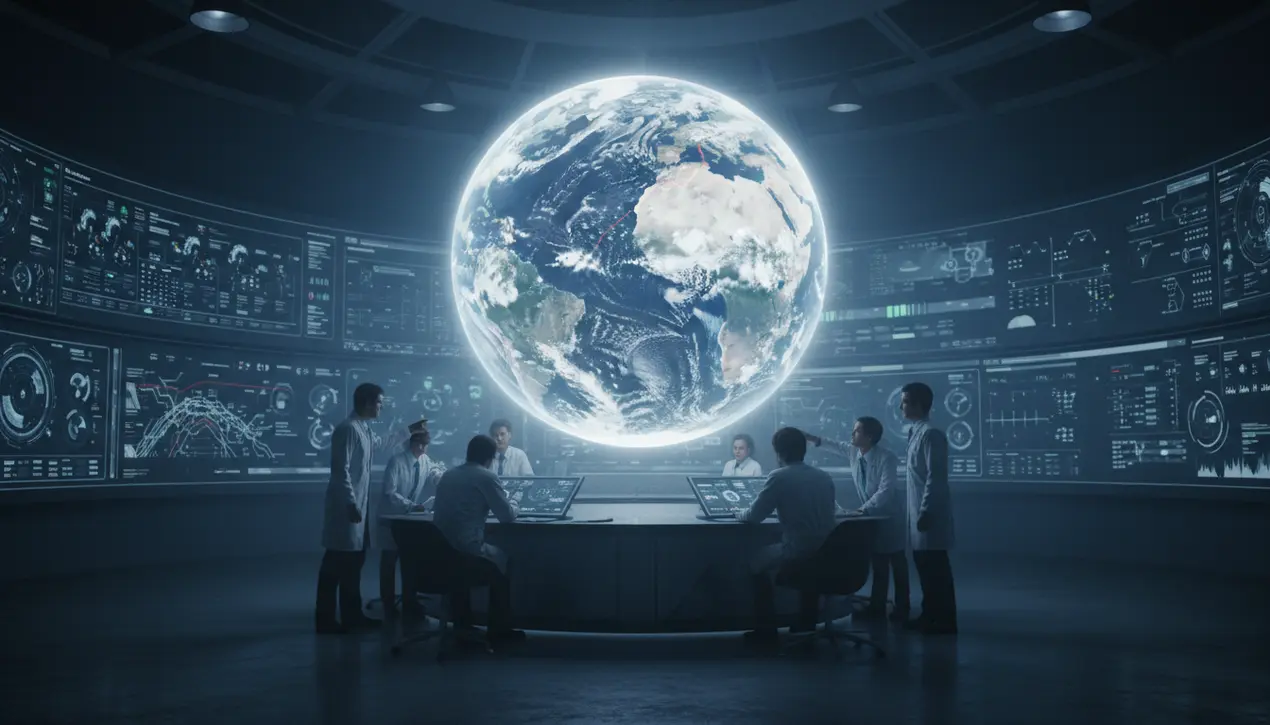
Scienceearth scienceEnvironmental Hazards
Scientists Build High-Resolution Digital Twin of Earth for Disaster Prediction
TH
Thomas Green
3 hours ago7 min read1 comments
In a staggering leap for computational earth science, a consortium of international researchers has successfully constructed a high-resolution digital twin of our entire planet, a simulation so precise it operates at an unprecedented one-kilometer scale. Imagine being able to track the genesis of a single thunderstorm from its first wisp of convection or follow the precise journey of a solitary cloud as it crests a mountain range—this is no longer the stuff of science fiction but the operational reality of this new model.This endeavor represents the culmination of decades of progress in climate modeling, supercomputing, and data assimilation, pushing beyond the coarse, hundred-kilometer resolutions that have long limited our predictive capabilities. The project, which leverages exascale computing power and ingests petabytes of real-time data from satellites, ocean buoys, and a global network of weather stations, effectively creates a living, breathing virtual Earth.Its primary mission is to revolutionize our capacity for disaster prediction, offering potentially life-saving foresight for events like the rapid intensification of hurricanes, the sudden onset of flash floods, or the unpredictable paths of wildfires. Think of it as the ultimate cosmic simulator, a tool that allows us to run countless 'what-if' scenarios, from assessing the long-term impact of a specific carbon emission policy to modeling the global ripple effects of a major volcanic eruption.The implications are as vast as the model itself, offering urban planners the data to design more resilient cities, providing agriculturalists with hyper-local seasonal forecasts, and granting policymakers an evidence-based crystal ball for environmental regulation. However, this monumental achievement is not without its own set of profound challenges and ethical considerations.The sheer energy consumption required to run such a complex simulation raises questions about the sustainability of the technology itself, echoing the paradox of using immense power to solve a crisis exacerbated by energy use. Furthermore, the ownership and access to this powerful predictive tool become critical issues; will its insights be a global public good, freely available to all nations, or could it become a geopolitical asset, creating a new divide between those who can afford its forecasts and those who cannot? The digital twin forces us to confront the ultimate feedback loop: as we use it to understand the intricate systems of our planet, we are simultaneously creating a new, man-made system of immense power and complexity. It is a testament to human ingenuity, a modern-day Apollo program for climate science, but its true success will be measured not by its technological prowess alone, but by how equitably and wisely we choose to use the profound knowledge it generates.
#digital twin
#earth simulation
#disaster prediction
#climate modeling
#supercomputing
#featured
#high-resolution forecasting
Stay Informed. Act Smarter.
Get weekly highlights, major headlines, and expert insights — then put your knowledge to work in our live prediction markets.
Comments
Loading comments...
© 2025 Outpoll Service LTD. All rights reserved.